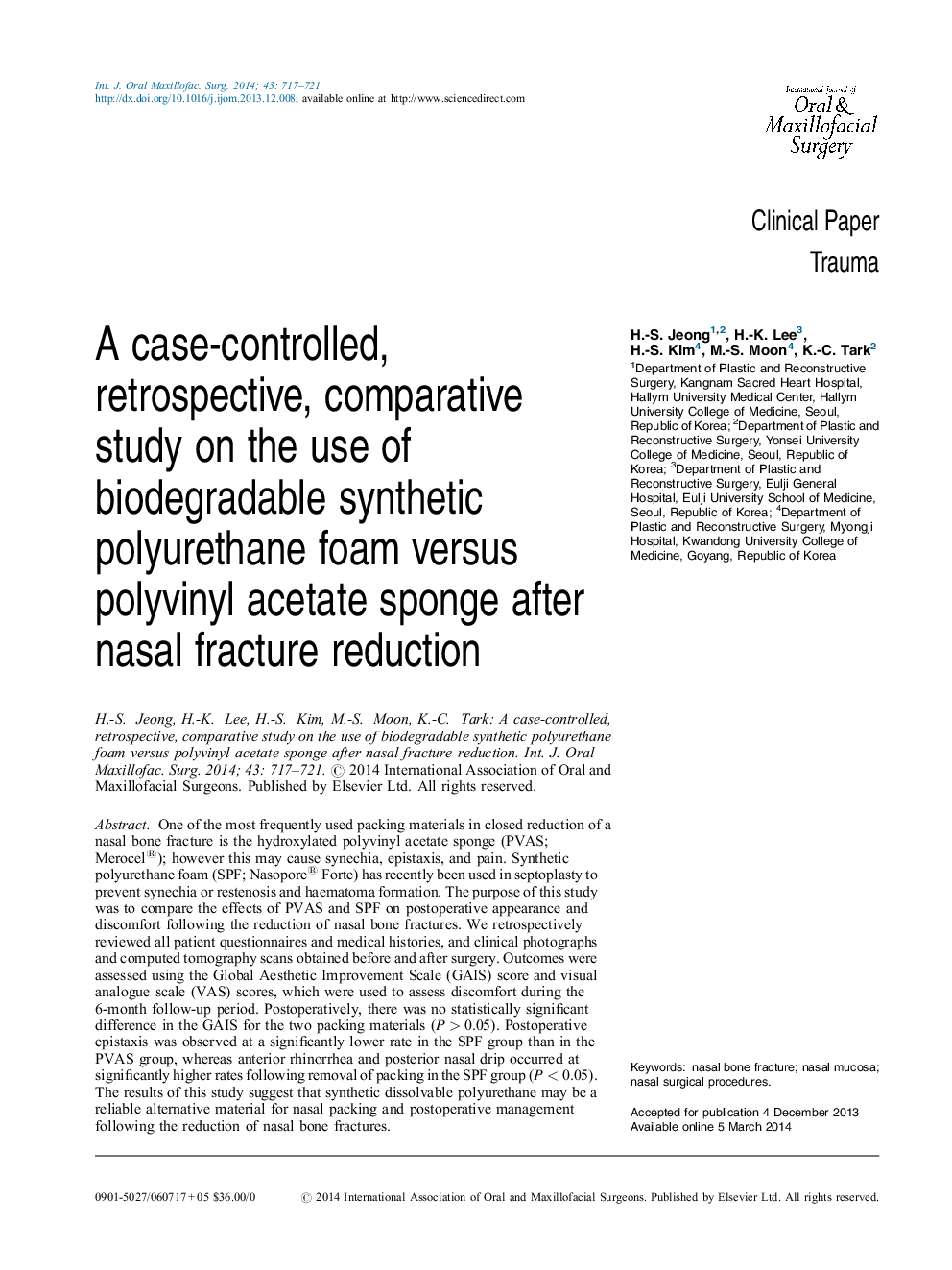| کد مقاله | کد نشریه | سال انتشار | مقاله انگلیسی | نسخه تمام متن |
|---|---|---|---|---|
| 3132536 | 1584141 | 2014 | 5 صفحه PDF | دانلود رایگان |
One of the most frequently used packing materials in closed reduction of a nasal bone fracture is the hydroxylated polyvinyl acetate sponge (PVAS; Merocel®); however this may cause synechia, epistaxis, and pain. Synthetic polyurethane foam (SPF; Nasopore® Forte) has recently been used in septoplasty to prevent synechia or restenosis and haematoma formation. The purpose of this study was to compare the effects of PVAS and SPF on postoperative appearance and discomfort following the reduction of nasal bone fractures. We retrospectively reviewed all patient questionnaires and medical histories, and clinical photographs and computed tomography scans obtained before and after surgery. Outcomes were assessed using the Global Aesthetic Improvement Scale (GAIS) score and visual analogue scale (VAS) scores, which were used to assess discomfort during the 6-month follow-up period. Postoperatively, there was no statistically significant difference in the GAIS for the two packing materials (P > 0.05). Postoperative epistaxis was observed at a significantly lower rate in the SPF group than in the PVAS group, whereas anterior rhinorrhea and posterior nasal drip occurred at significantly higher rates following removal of packing in the SPF group (P < 0.05). The results of this study suggest that synthetic dissolvable polyurethane may be a reliable alternative material for nasal packing and postoperative management following the reduction of nasal bone fractures.
Journal: International Journal of Oral and Maxillofacial Surgery - Volume 43, Issue 6, June 2014, Pages 717–721
